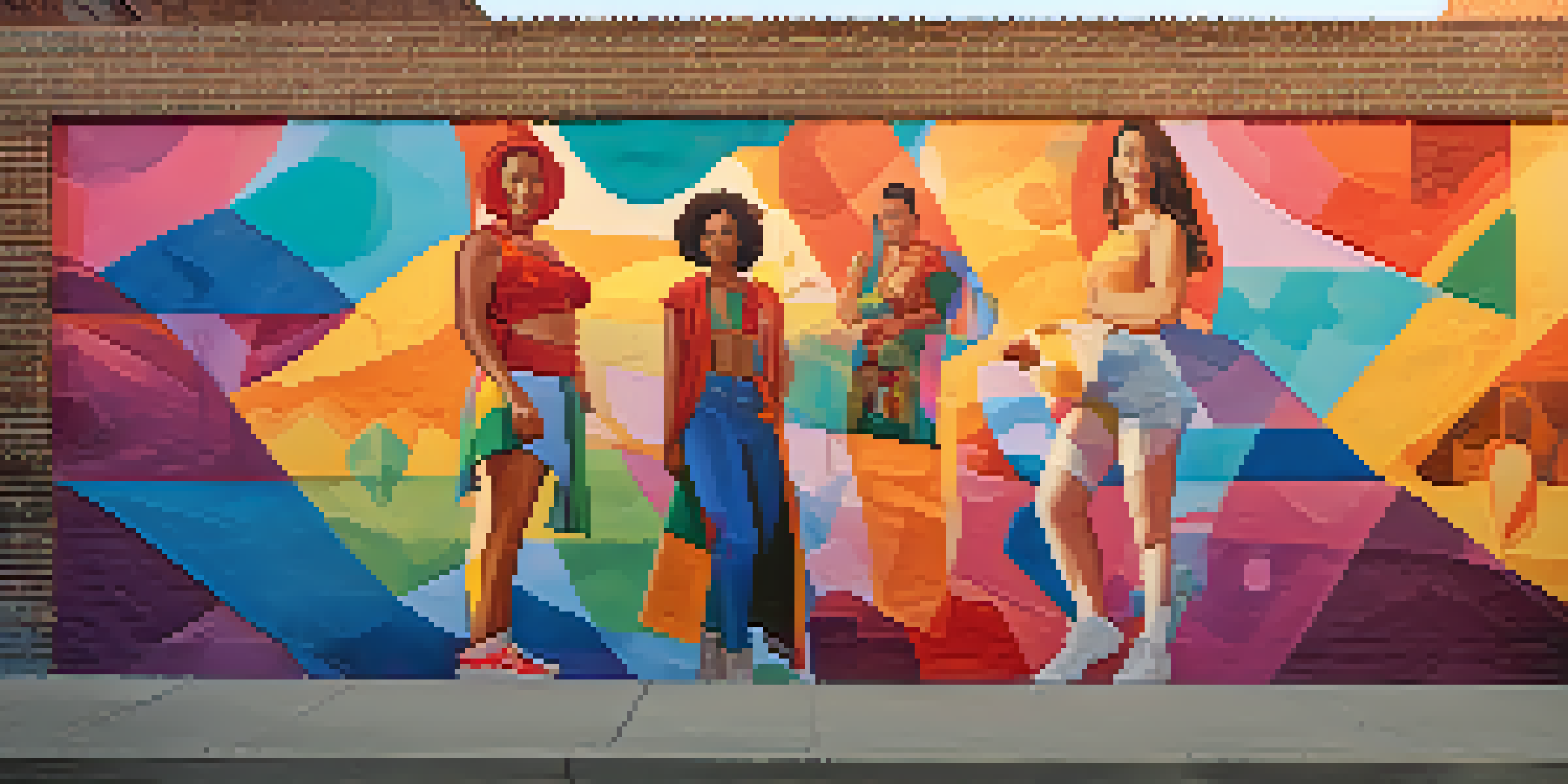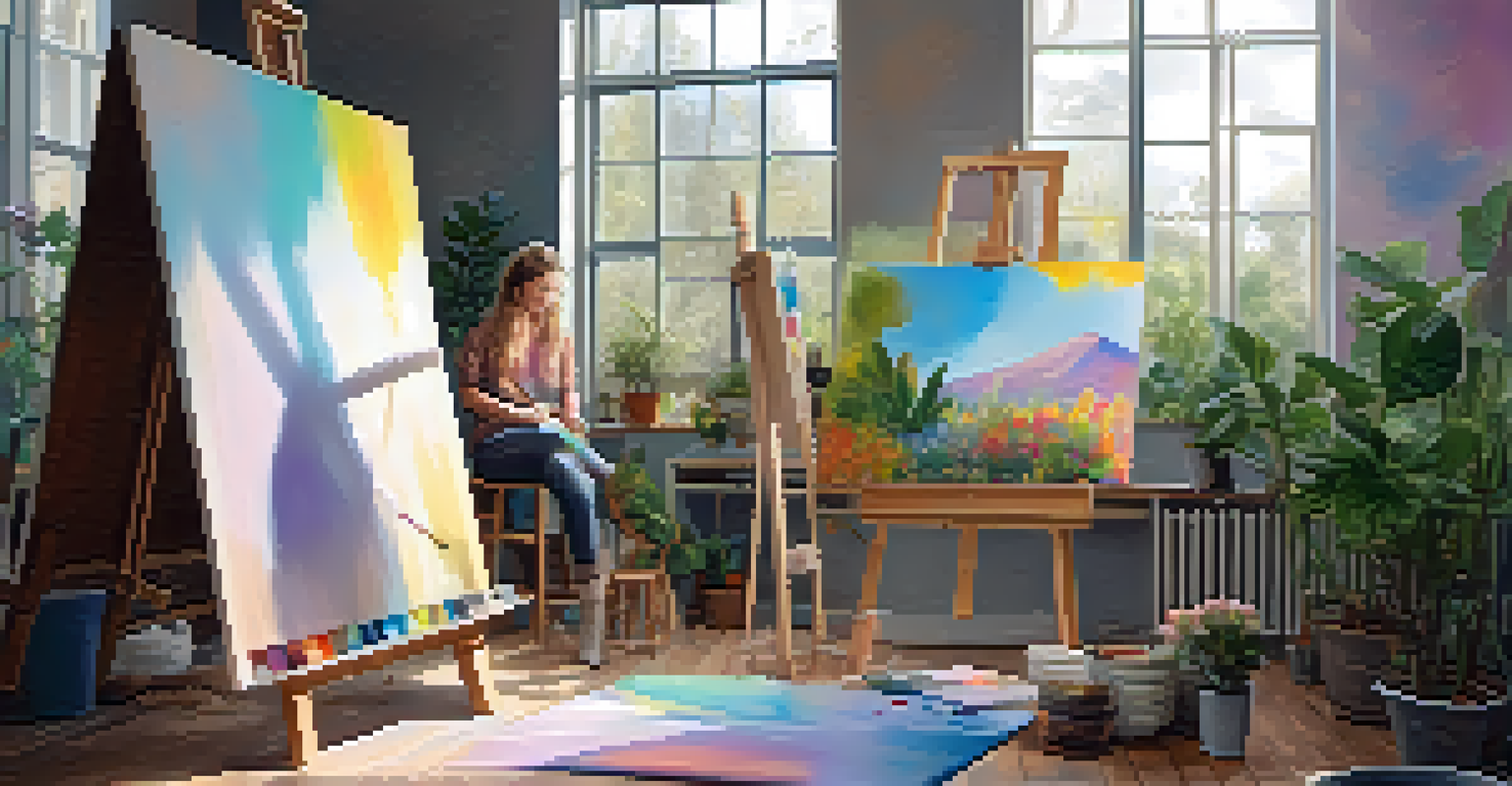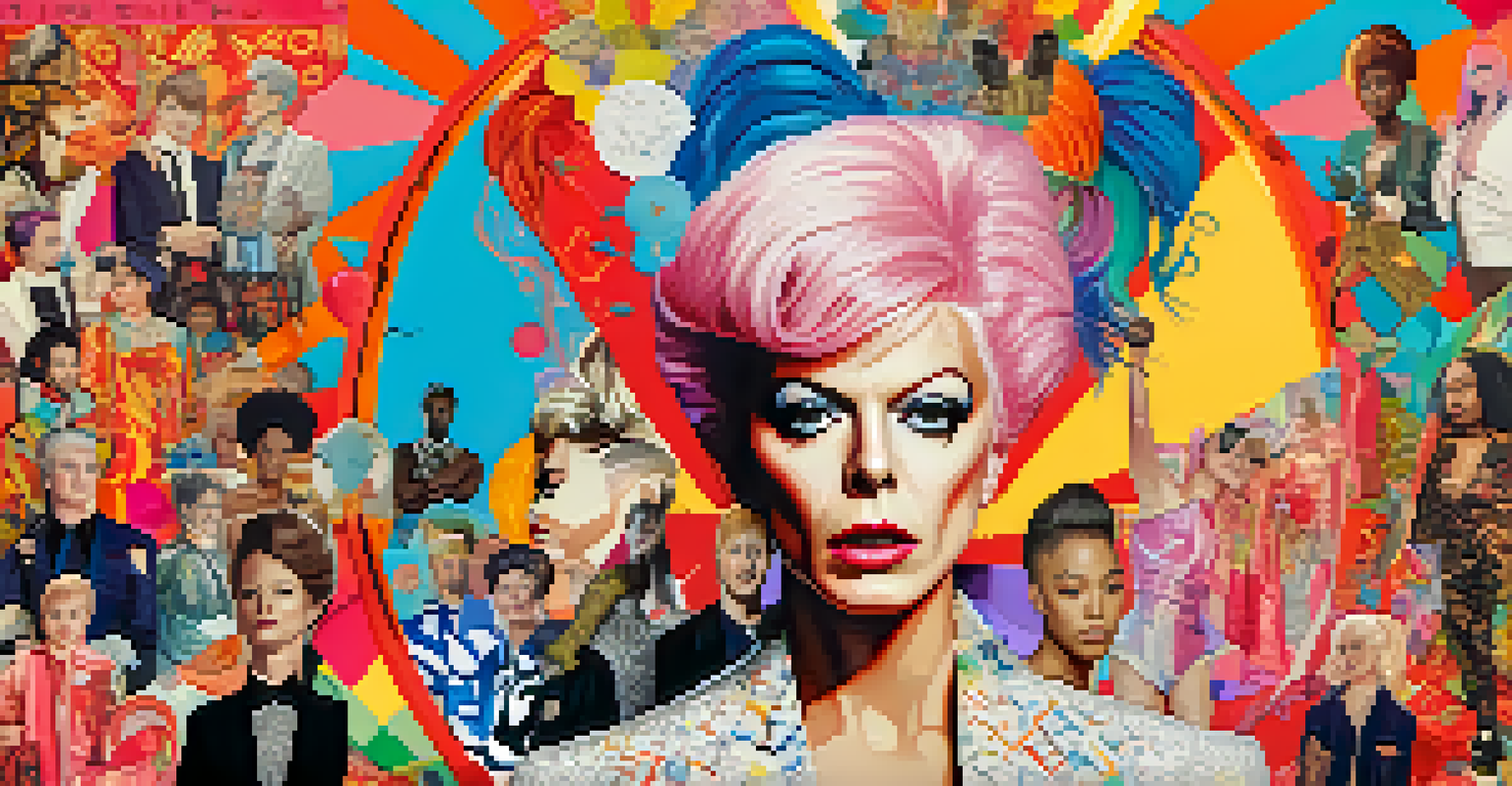The Influence of Pop Culture on Gender Identity in Art

Understanding Gender Identity: A Cultural Perspective
Gender identity is a deeply personal experience that reflects how individuals perceive themselves in relation to gender. It is influenced by a myriad of factors, including societal norms, personal experiences, and, importantly, pop culture. Through various forms of media, pop culture not only represents but also challenges traditional notions of gender, allowing for a broader understanding of what gender can mean.
Art is a way of recognizing and expressing what is often difficult to articulate about identity.
Consider how films, music, and art have evolved over time. Previously, gender roles were often strictly defined, but today, pop culture provides a platform for diverse expressions of identity. Artists and creators use their work to reflect their experiences and challenge societal expectations, making art a vital space for exploring and affirming gender identity.
As we engage with pop culture, we begin to see the fluidity of gender represented in various artistic forms, from gender-bending characters in films to non-binary musicians redefining musical genres. This representation is crucial in shaping public perception and acceptance of diverse gender identities, allowing individuals to feel seen and validated.
Pop Culture Icons: Redefining Gender Norms
Pop culture icons often serve as catalysts for change, pushing the boundaries of traditional gender norms. Figures like David Bowie and Lady Gaga have used their platforms to challenge societal expectations of gender through their music, fashion, and public personas. Their influence encourages fans to embrace their own identities, often leading to greater acceptance of non-conforming expressions.

Consider the impact of these artists' visual styles, which often blur the lines between masculinity and femininity. This not only inspires individuals to express their own identities but also sparks conversations around what gender means in contemporary society. As more artists embrace fluidity in their work, the cultural narrative begins to shift, allowing for a more inclusive understanding of gender.
Pop Culture Challenges Gender Norms
Artists and influencers use their platforms to redefine traditional gender expressions, fostering acceptance and exploration of diverse identities.
Moreover, the representation of gender in pop culture is not just limited to famous personalities. Everyday influencers on platforms like Instagram and TikTok also contribute by showcasing their unique styles and identities. This grassroots movement fosters a community where individuals feel empowered to explore and express their gender identity freely.
Art Movements: Reflecting Changing Gender Perceptions
Various art movements throughout history have played a significant role in shaping perceptions of gender identity. For instance, the feminist art movement of the 1970s challenged conventional representations of women in art, advocating for a new understanding of femininity. Artists sought to reclaim their narratives, ultimately influencing how gender is depicted in contemporary art.
The artist's job is not to be a creator of new things, but a creator of new perspectives.
In more recent years, movements like queer art have emerged, focusing on the experiences of LGBTQ+ individuals. These artists often confront societal norms head-on, using their work to highlight issues related to identity, sexuality, and gender. Such movements not only enrich the art world but also provide a critical lens through which to examine broader societal attitudes towards gender.
As we analyze these movements, it's evident that art serves as both a mirror and a mold for societal values. By reflecting the struggles and triumphs of diverse gender identities, these movements challenge viewers to rethink their own perspectives and embrace a more nuanced understanding of gender.
The Role of Social Media in Shaping Gender Identity
Social media has revolutionized the way we engage with pop culture and, by extension, gender identity. Platforms like Instagram, TikTok, and YouTube allow individuals to express their identities and connect with like-minded communities. This democratization of expression has led to an explosion of diverse representations of gender, often challenging traditional norms in real-time.
Through hashtags, trends, and viral content, social media encourages conversations around gender identity that were once marginalized. Users share their experiences, art, and narratives, creating a rich tapestry of voices that reflect the complexities of gender. This environment fosters understanding and acceptance, enabling individuals to see themselves represented in ways they may not have encountered before.
Art as a Medium for Identity Exploration
Art provides a safe space for individuals to express and process their gender identity, encouraging community and shared experiences.
Additionally, social media influencers play a crucial role in shaping perceptions of gender identity. By sharing their journeys and promoting inclusivity, they inspire others to explore their own identities. This ripple effect contributes to a broader cultural shift, making discussions about gender more accessible and relatable.
Art as a Safe Space for Gender Exploration
Art has long been a refuge for those exploring their gender identity, providing a safe space to express complex emotions and experiences. Whether through painting, performance, or digital media, artists can convey their truths in ways that resonate deeply with others. This creative outlet allows for exploration without the constraints often imposed by society.
For many, creating art becomes a means of processing their gender identity. It serves as a therapeutic tool that enables individuals to confront their feelings and communicate their experiences. This cathartic process not only aids personal growth but also fosters connections with others who may share similar journeys.
Moreover, art exhibitions focused on gender identity often create communal spaces where individuals can come together, share stories, and support one another. These gatherings encourage dialogue and understanding, highlighting the importance of representation in the art world and reinforcing the idea that everyone deserves to have their identity acknowledged and celebrated.
Challenges Within Pop Culture: Representation Gaps
Despite the progress made in representing diverse gender identities, gaps still exist within pop culture. Many mainstream narratives continue to overlook the experiences of marginalized groups, particularly individuals of color and those from lower socioeconomic backgrounds. This lack of representation can perpetuate stereotypes and hinder the broader acceptance of diverse identities.
The challenge lies in ensuring that all voices are heard and that pop culture reflects the true diversity of human experiences. While some artists are making strides to include and elevate underrepresented narratives, there is still significant work to be done. It's essential for consumers to seek out and support creators who authentically represent a wide range of gender identities.
Need for Inclusive Representation
Despite progress, gaps in representation persist, highlighting the importance of amplifying marginalized voices within pop culture.
By advocating for more inclusive representation, audiences can help shift the cultural landscape. This not only benefits the artists who create this work but also fosters a society that values and respects all identities, paving the way for future generations to express themselves freely.
The Future of Gender Identity in Art and Pop Culture
Looking ahead, the intersection of pop culture and gender identity promises to evolve further as societal norms continue to shift. With the rise of technology and digital platforms, new opportunities for representation and expression are emerging every day. Artists are increasingly blending traditional forms with innovative digital mediums, pushing the boundaries of how we understand and experience gender.
As conversations around gender become more mainstream, we can expect to see even greater diversity in artistic representation. This evolution is crucial for fostering acceptance and understanding, as art has the unique ability to challenge perceptions and inspire dialogue. The more diverse the narratives, the richer the cultural tapestry becomes.

Ultimately, the future of gender identity in art and pop culture will depend on our collective commitment to inclusivity and representation. By engaging with and supporting diverse voices, we can ensure that the art world continues to be a vibrant space where all identities are celebrated and explored.